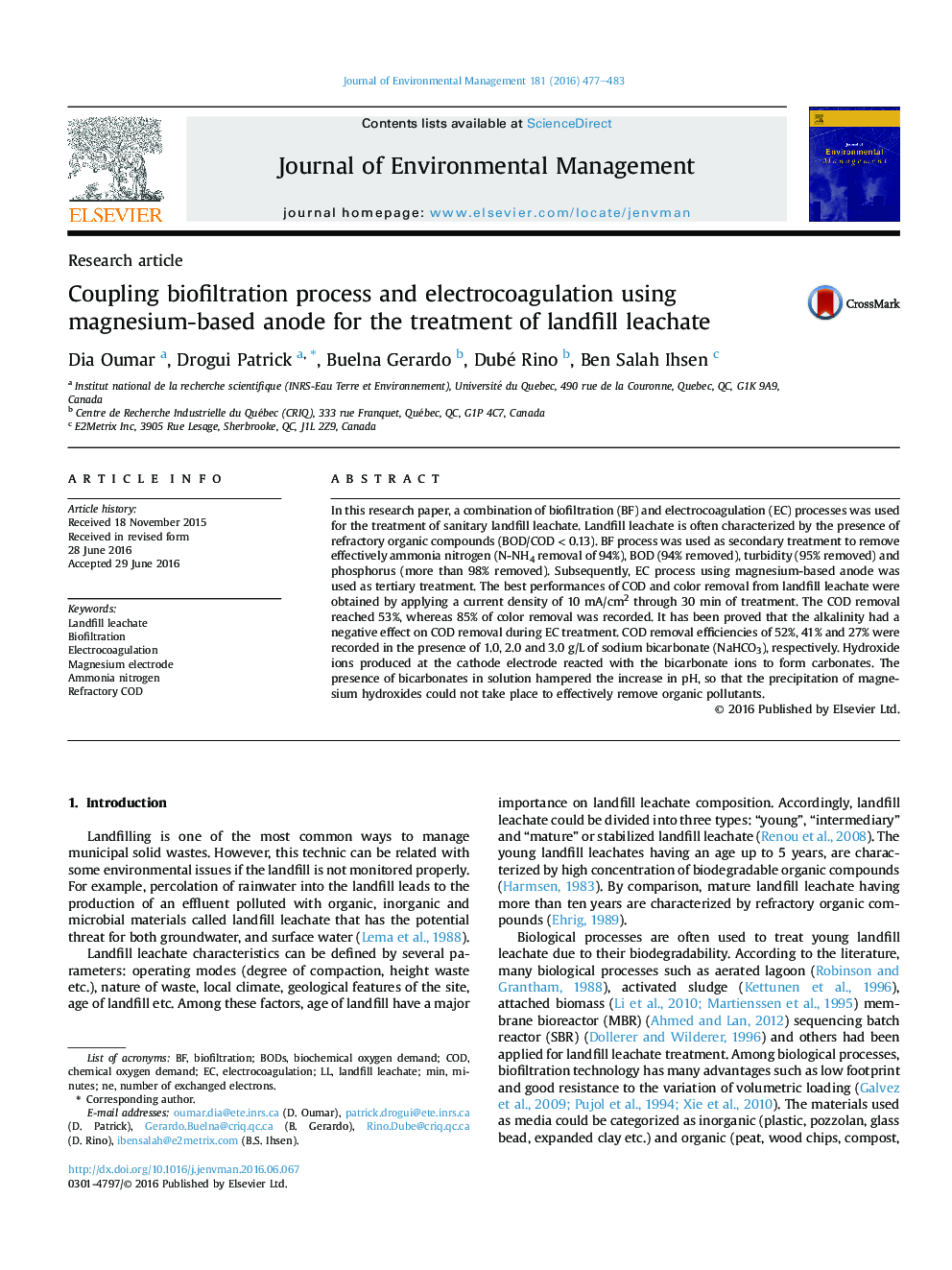| Article ID | Journal | Published Year | Pages | File Type |
|---|---|---|---|---|
| 7479734 | Journal of Environmental Management | 2016 | 7 Pages |
Abstract
In this research paper, a combination of biofiltration (BF) and electrocoagulation (EC) processes was used for the treatment of sanitary landfill leachate. Landfill leachate is often characterized by the presence of refractory organic compounds (BOD/CODÂ <Â 0.13). BF process was used as secondary treatment to remove effectively ammonia nitrogen (N-NH4 removal of 94%), BOD (94% removed), turbidity (95% removed) and phosphorus (more than 98% removed). Subsequently, EC process using magnesium-based anode was used as tertiary treatment. The best performances of COD and color removal from landfill leachate were obtained by applying a current density of 10Â mA/cm2 through 30Â min of treatment. The COD removal reached 53%, whereas 85% of color removal was recorded. It has been proved that the alkalinity had a negative effect on COD removal during EC treatment. COD removal efficiencies of 52%, 41% and 27% were recorded in the presence of 1.0, 2.0 and 3.0Â g/L of sodium bicarbonate (NaHCO3), respectively. Hydroxide ions produced at the cathode electrode reacted with the bicarbonate ions to form carbonates. The presence of bicarbonates in solution hampered the increase in pH, so that the precipitation of magnesium hydroxides could not take place to effectively remove organic pollutants.
Keywords
Related Topics
Physical Sciences and Engineering
Energy
Renewable Energy, Sustainability and the Environment
Authors
Dia Oumar, Drogui Patrick, Buelna Gerardo, Dubé Rino, Ben Salah Ihsen,
